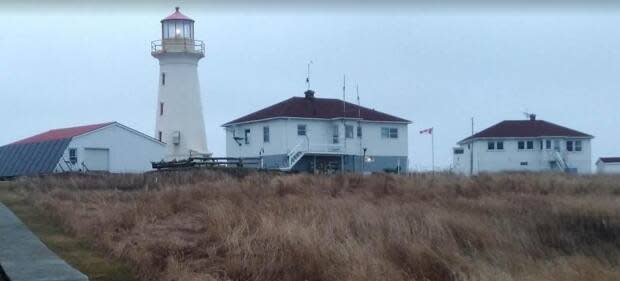Grand Manan man gets dream job at Machias Seal Island lighthouse

If lighthouses are your thing, a job on Machias Seal Island is a dream.
Just 19 kilometres southwest of Grand Manan, the 12-hectare island has been home to a lighthouse for almost two centuries.
So, for Grand Manan's Ken Ingersoll, a four-week stint tending to the remote lighthouse was a thrill from the moment he arrived.
"One of the things I noticed when we landed on Machias [Seal Island] was how perfect everything was," Ingersoll said in an interview with Information Morning Saint John.
"Everything had a place … and I knew right then when I looked at it that … this is the place for me to be and I knew that, immediately, that it was a place that I would be part of to keep it that way, to keep it pristine."
Ingersoll has been a volunteer keeper for 15 years, looking after both Swallowtail lighthouse and Long Eddy Point lighthouse on Grand Manan.

In that work, he got to know some Coast Guard employees, who encouraged him to apply for a casual position on Machias Seal Island.
"They just kind of said, 'Hey man, you should apply for Machias. You'd be great out there.' So I thought about it and I applied and jumped through hoops and they called me and hired me."
Ingersoll said the psychological requirements of the job seemed to matter a lot to the Coast Guard.
"I think it's a matter, basically, of wanting and being able to work and live in isolation without any difficulty," he said.
Ingersoll said that wasn't a problem for him.
"It's pretty nice out there. It's quiet, the view is spectacular. The storms are incredible, but you have to consider, you know, we've maintained a light station there since 1832. So they really got it down pat."

Ingersoll experienced two during his January stint, with winds topping 110 km/hr.
In weather like that, he said the only thing you can do is stay inside and not put yourself at unnecessary risk.
"Going outside that night to check on anything would have been very harmful, would probably blow you off the boardwalk," he said, adding that you always know in the back of your mind that you can't call 911 if anything happens.
He said the worst thing that happened during his first month-long stint was he nearly ran out of coffee. Fortunately, a Coast Guard crew came out to replace the light in the lighthouse, and he was able to get an emergency delivery.
"Crisis averted," he said.

Essentially, the keepers are there to ensure the automated systems work correctly, and they also make weather observations for Environment Canada four times a day.
Plus, they help assert Canada's claims to the island, which is disputed by the United States government.
Right now, Ingersoll will do three stints a year, each a month long.
He's looking forward to his next trip out in the spring, which he said will be a very different experience.
"Because you have the students from UNBSJ, they stay in the second house. And the puffins and the razor bills and the terns" arrive to nest, he said.

"So, it would be a completely different feeling island than it would have been when I was there in January."
Ingersoll said it's amazing to be one of the few people in this day and age to experience this kind of life.
"For me it's an honour, it really is, to be part of a 200-year-old light station. And there aren't many of them left, you know.
"This is really hard to find, a job as a light keeper and get paid for it, in 2023."


